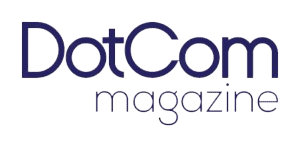In the era of digital transformation, AI in employee performance management is not just a trend—it’s an irreversible evolution. As organizations seek better ways to measure productivity, enhance workforce development, and improve engagement, the role of AI in employee performance management has become increasingly central. Companies that leverage AI in employee performance management benefit from real-time data analysis, unbiased evaluations, and actionable insights that support strategic HR decisions. Gone are the days of annual reviews and subjective metrics; AI now powers systems that continuously optimize employee performance, creating smarter, more agile, and more accountable organizations.
This article delves into ten critical insights that illustrate how AI is fundamentally transforming employee performance management and reshaping the future of work.
1. Continuous Performance Monitoring Over Annual Reviews
Traditional performance reviews—often conducted annually—are outdated and ineffective in today’s dynamic work environment. AI introduces continuous performance tracking, collecting and analyzing real-time data from emails, task management tools, project dashboards, and communication apps.
This constant stream of data allows managers and HR leaders to provide instant feedback, track productivity trends, and intervene proactively when performance dips. Employees benefit from timely coaching, while organizations foster a culture of agility and responsiveness.
2. Bias-Free Evaluations and Fairer Assessments
One of the biggest challenges in employee evaluations is unconscious bias. AI algorithms, when designed ethically and trained on diverse data, help eliminate subjective judgments by focusing on measurable outcomes and behaviors.
AI assesses performance based on concrete KPIs—such as project completion rates, customer satisfaction scores, or peer collaboration—without being influenced by factors like gender, race, or personality traits. This fosters a more equitable workplace and ensures that promotions and rewards are truly merit-based.
3. Personalized Learning and Development PathwaysAI doesn’t just measure performance—it actively enhances it. By identifying skills gaps, learning preferences, and career goals, AI-powered platforms create customized development plans for each employee.
If an employee struggles with time management or data analysis, the system can recommend micro-learning courses, videos, or mentorship opportunities. Personalized learning boosts engagement, accelerates growth, and aligns employee goals with organizational objectives.
4. Intelligent Goal Setting and OKR Alignment
Setting meaningful goals is crucial to performance management. AI assists in crafting SMART goals (Specific, Measurable, Achievable, Relevant, Time-bound) by analyzing role data, industry benchmarks, and previous performance.
AI tools also facilitate OKR (Objectives and Key Results) alignment, ensuring that employee goals tie directly into team and company-wide objectives. This clarity creates accountability, motivation, and strategic alignment across all levels of the organization.
5. Real-Time Feedback and Coaching
In high-performing cultures, feedback is continuous, constructive, and data-backed. AI enables real-time feedback loops, where employees receive instant notifications about performance milestones, delays, or deviations from goals.
Virtual coaching assistants can provide automated tips, recognize achievements, or prompt self-evaluations. This immediacy enhances learning and encourages a culture of continuous improvement, rather than delayed reviews that miss the moment for change.
6. Predictive Analytics for Talent Retention
AI excels at recognizing patterns and predicting future outcomes. By analyzing behavioral data, sentiment trends, and engagement levels, AI can forecast attrition risks and identify employees likely to disengage or resign.
HR teams can then take preventive action—adjusting workloads, offering growth opportunities, or addressing workplace conflicts. Predictive retention strategies reduce turnover costs and preserve institutional knowledge.
7. Enhanced Collaboration and Team Dynamics Analysis
AI doesn’t just evaluate individuals—it can also assess team performance and collaboration dynamics. By analyzing communication patterns, meeting effectiveness, and shared project outcomes, AI identifies bottlenecks or imbalances in group performance.
Managers can use these insights to restructure teams, resolve conflicts, or recognize strong team contributors. Optimizing group dynamics leads to more cohesive teams and higher overall productivity.
8. Automated Reporting and Performance Dashboards
Manual performance reports are time-consuming and often inconsistent. AI streamlines reporting with automated dashboards that update in real time and display personalized metrics for each stakeholder.
Managers can view individual, team, and department-level performance, while employees can monitor their progress toward goals. These visualizations make performance data accessible and actionable, improving transparency and decision-making.
9. Sentiment Analysis and Employee Engagement Tracking
AI-powered sentiment analysis tools scan emails, chat messages, and feedback forms to gauge employee morale and emotional well-being. If engagement levels drop or stress indicators rise, HR is alerted to investigate and take action.
This proactive approach ensures that performance challenges are addressed early—before they lead to burnout, dissatisfaction, or resignation. Keeping a pulse on workplace sentiment fosters a supportive, high-performing culture.
10. Strategic Workforce Planning and Succession Management
AI plays a crucial role in long-term talent strategy by identifying high-potential employees, analyzing skills inventories, and recommending career paths. This supports succession planning, internal mobility, and leadership development.
By modeling different workforce scenarios, AI helps organizations forecast future needs and build internal pipelines for critical roles. Strategic planning powered by AI ensures business continuity and a competitive edge in talent development.
Conclusion: The Intelligent Future of Performance Management
The integration of AI in employee performance management is redefining how organizations evaluate, develop, and retain talent. With real-time analytics, personalized development, bias-free insights, and proactive engagement, AI empowers businesses to create more effective, equitable, and agile workforces.
By focusing on the human side of AI—using data to coach rather than control—companies can foster cultures of growth, transparency, and excellence. Employees are no longer managed by gut feelings or outdated systems but supported by intelligent tools that enable their best work.
The future of AI in employee performance management is one where machines enhance human potential, and people thrive in workplaces that truly understand them. Forward-thinking organizations that embrace this shift will be better equipped to innovate, compete, and succeed in the digital age.














